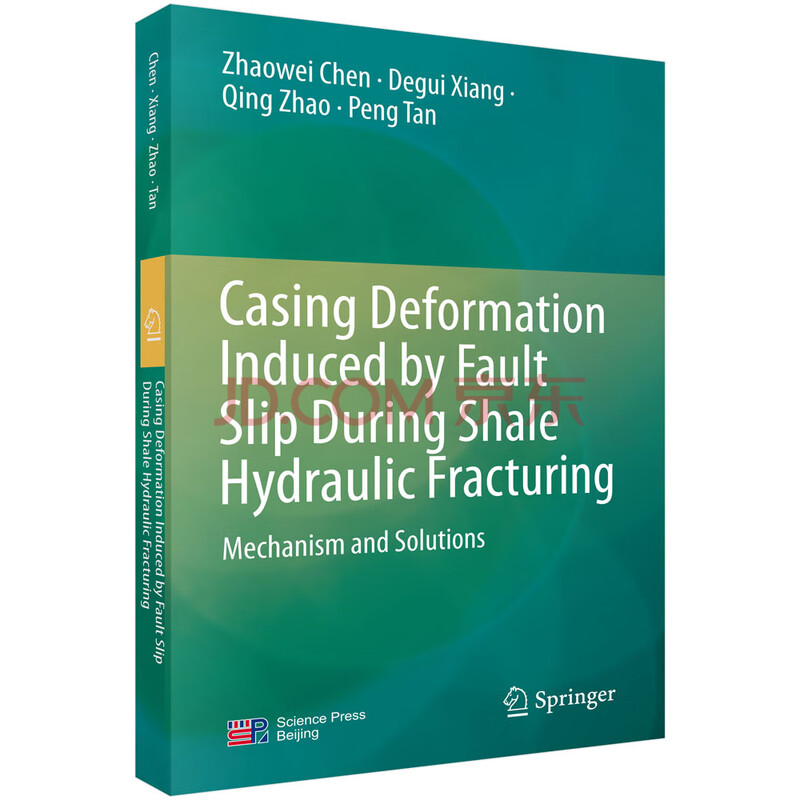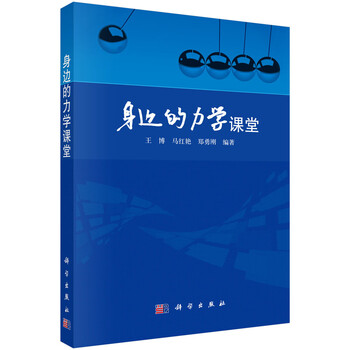内容简介
随着页岩油气的大规模开发,压裂诱发套管变形问题非常突出。《Casing Deformation Induced by Fault Slip During Shale Hydraulic Fracturing Mechanism and Solutions(四川页岩气套管变形机理和防控技术)》将系统介绍作者近年来基于储层地质力学、套管变形力学、水力压裂力学而建立的套管变形地质工程一体化防控技术。内容包括流体通道-断层激活模型和套管变形机理、流体通道类型和形成条件、套管变形风险预测技术、基于微地震和压裂施工*线的套管变形预警技术、 基于水力压裂模拟的套管变形控制技术以及“以柔克刚”的套管变形预防理念及技术等。
精彩书摘
Chapter 1 Introduction
With the sustained and steady development of China’s society and economy, the energy demand of China has continuously remained at a relatively high level. China became a net importer of oil in 1993, and a net importer of natural gas in 2006. China is now the largest consumer and net importer of energy in the world. China’s dependence on imported oil is nearly 70%, and on imported natural gas is more than 40%. The contradiction between supply and demand has become a very serious problem restricting the sustainable development of China’s national economy and society, and has also brought tremendous pressure to the national energy security.
Against this backdrop, China has carried out comprehensive geological evaluation, exploration evaluation and development pilot tests for shale gas by focusing on the marine shales of the lower Paleozoic Wufeng Formation^Longmaxi Formation and the Qiongzhusi Formation in the south. As a result, shale gas has been discovered successively in the Wufeng Formation^Longmaxi Formation of the Sichuan Basin, East Henan, West Hubei, Northern Yunnan, Northern Guizhou and Western Hunan, and industrial shale gas production has been obtained in Weiyuan, Changning, Zhaotong, Fushun—Yongchuan and Fuling of the Sichuan Basin. Since then, the development of shale gas has started and was gradually upscaled.
1.1 Overview of Shale Gas Development in Sichuan
Changning, Weiyuan and Zhaotong Shale Gas Fields are located in the south of the Sichuan Basin, mainly in the areas east of Daliangshang Mountain, south of the Silurian denudation line of the middle Sichuan paleo-uplift, west of the Huayingshan Mountain and north of the Qianbei Sag, covering an area of about 4 x 104 km2.
The exploration and development of shale gas in southern Sichuan can be divided into four main phases (He et al. 2021):
Phase 1: Layer evaluation and area selection (2006-2009)
In 2006, PetroChina Southwest Oil and Gas Field Company took the lead in carrying out the evaluation of shale gas resources and layers, as well as the selection of areas in the Sichuan Basin. According to the research findings, there are organic matter-rich black shales developed in the Sichuan Basin. The lower Paleozoic sedimentation is favorable, and has stable and extensive distribution and large thickness. Their quality is comparable to that of the shales in North America. They are commonly seen during drilling, and have great potential for exploration and development. In 2009, PetroChina Southwest Oil and Gas Field Company executed a shale gas evaluation project in Fushun-Yongchuan area jointly with Shell China Exploration and Production Co., Ltd. In this project, such operations as special layer coring, profile observation, analysis, testing and old data processing were conducted. By executing this project, key parameters to evaluate the shale gas were obtained, methods to evaluate the geology and resources were explored and established, technical methods and quantitative indicator systems to evaluate the resources and select areas and layers were set up, the Wufeng Formation-Longmaxi Formation were identified as the most favorable layer series for exploration and development in this phase, and the 3 favorable areas of Changning, Weiyuan and Fushun were selected.
Phase 2: Pilot test (2009-2014)
On the basis of resource evaluation and layer and area selection, a pilot test of shale gas development was carried out in order to effectively tap the rich shale gas resources in the Basin. As a result, three breakthroughs were achieved. The successful drilling ofWell Wei 201, the first shale gas well in China, signifies the breakthrough in having shale gas produced. The successful drilling ofWell 201-H1, the first horizontal shale gas well in China, signifies the breakthrough in the technologies of horizo
目录
Contents
1 Introduction 1
1.1 Overview of Shale Gas Development in Sichuan 1
1.2 Main Technologies for Shale Gas Development in Sichuan 3
1.3 Deformation of Shale Gas Casing and Its Influence in Sichuan 7
1.4 Research Status of Casing Deformation for Sichuan Shale Gas 11
1.4.1 Influence of Temperature Stress on Casing
Deformation 12
1.4.2 Influence of Asymmetric Fracturing on Casing Deformation 12
1.4.3 Influence of Cementing Quality on Casing Deformation 13
1.4.4 Influence of Fault Slip on Casing Deformation 14
1.5 Summary 16
References 16
2 Causes and Mechanisms of Casing Deformation 19
2.1 Shape Features of Casing Deformation 19
2.2 Analysis on Geological and Engineering Causes of Casing Deformation 24
2.2.1 Analysis on Geological Cause of Casing Deformation 28
2.2.2 Analysis on Engineering Cause of Casing Deformation 30
2.3 Fluid Channel–Fault Activation Model and Casing Deformation Mechanism 33
2.4 Analysis of Fault/Fracture Activation Instances in Changning Block 36
2.4.1 Mechanical Conditions for Fault Activation 36
2.4.2 In-Situ Stress Characteristics in Changning, Sichuan 38
2.4.3 Shale Friction Coefficient 41
2.4.4 Fracture Zone Characteristics in Changning, Sichuan 43
2.4.5 Fracturing Treatment Pressure Characteristics of Changning Block 44
2.4.6 Fracture Zone Activity Analysis of in Changning 46
2.5 Summary 52
References 53
3 Types and Forming Conditions of Fluid Channels 55
3.1 Mechanical Conditions for Formation of Bedding Channels 55
3.2 Analysis of Mechanical Conditions and Influencing Factors for Formation of Sidewall Channels 58
3.2.1 Mechanical Model of Casing–cement Sheath–surrounding Rock System Under
Internal Pressure 59
3.2.2 Stress Analysis and Microannulus Solution While Unloading the Internal Pressure of Casing 67
3.2.3 Experimental Verification 69
3.2.4 Analysis of Influencing Factors 72
3.2.5 Conclusions 76
3.3 Field Case Analysis of Sidewall Channel 77
3.4 Summary 84
References 84
4 Assessment and Prediction of Fault/Fracture Slip Risk 87
4.1 Quantitative Estimation of Fault Slip Risk Based on Differential Pressure 87
4.2 QRA Fault/Fracture Slip Risk Assessment 91
4.3 Fault/Fracture Slip Risk Assessment for Well Ning 201-H1 93
4.4 Fault Slip Risk Assessment for the H19 Pad in the Ning 201
Well Block 97
4.5 Risk Assessment and Prediction of Fault Slip in the Ning 209
Well Block 105
4.5.1 Project Background 105
4.5.2 Fault/Fracture Identification 106
4.5.3 Characteristics of In-Situ Stress Distribution 108
4.5.4 Fault Slip Risk Assessment 110
4.5.5 Analysis Results 114
4.6 Summary 115
References 117
5 Quantitative Analysis Technique of Fault Slippage and Casing Deformation 119
5.1 The Calculation Method of Casing Deformation 119
5.2 The Relationship Between Casing Deformation and the Scale of Fault/Fracture 121
5.3 Method for Calculating Fault Slippages at Different Positions 125
5.3.1 Fault Slip Displacement Calculation Method 125
5.3.2 Application of Fault Slip Volume Analysis in Well Ning 201-H1 127
Contents xiii
5.3.3 Application of Fault Slip Magnitude Analysis in Changning H19 Pad 131
5.4 Summary 138
References 138
6 Casing Deformation Early Warning Technology 139
6.1 Introduction 139
6.2 Microseismic Temporal and Spatial Characteristics of Casing-DeformedWells 139
6.3 Microseismic B Value Characteristics of Casing-Deformed Wells 143
6.4 Seismic Source Model-Based Theoretical Analysis 146
6.5 Fracturing Curve Characteristics of Casing-Deformed Wells 148
6.6 Casing Deformation Early Warning Method Base
试读
Chapter 1 Introduction
With the sustained and steady development of China’s society and economy, the energy demand of China has continuously remained at a relatively high level. China became a net importer of oil in 1993, and a net importer of natural gas in 2006. China is now the largest consumer and net importer of energy in the world. China’s dependence on imported oil is nearly 70%, and on imported natural gas is more than 40%. The contradiction between supply and demand has become a very serious problem restricting the sustainable development of China’s national economy and society, and has also brought tremendous pressure to the national energy security.
Against this backdrop, China has carried out comprehensive geological evaluation, exploration evaluation and development pilot tests for shale gas by focusing on the marine shales of the lower Paleozoic Wufeng Formation^Longmaxi Formation and the Qiongzhusi Formation in the south. As a result, shale gas has been discovered successively in the Wufeng Formation^Longmaxi Formation of the Sichuan Basin, East Henan, West Hubei, Northern Yunnan, Northern Guizhou and Western Hunan, and industrial shale gas production has been obtained in Weiyuan, Changning, Zhaotong, Fushun—Yongchuan and Fuling of the Sichuan Basin. Since then, the development of shale gas has started and was gradually upscaled.
1.1 Overview of Shale Gas Development in Sichuan
Changning, Weiyuan and Zhaotong Shale Gas Fields are located in the south of the Sichuan Basin, mainly in the areas east of Daliangshang Mountain, south of the Silurian denudation line of the middle Sichuan paleo-uplift, west of the Huayingshan Mountain and north of the Qianbei Sag, covering an area of about 4 x 104 km2.
The exploration and development of shale gas in southern Sichuan can be divided into four main phases (He et al. 2021):
Phase 1: Layer evaluation and area selection (2006-2009)
In 2006, PetroChina Southwest Oil and Gas Field Company took the lead in carrying out the evaluation of shale gas resources and layers, as well as the selection of areas in the Sichuan Basin. According to the research findings, there are organic matter-rich black shales developed in the Sichuan Basin. The lower Paleozoic sedimentation is favorable, and has stable and extensive distribution and large thickness. Their quality is comparable to that of the shales in North America. They are commonly seen during drilling, and have great potential for exploration and development. In 2009, PetroChina Southwest Oil and Gas Field Company executed a shale gas evaluation project in Fushun-Yongchuan area jointly with Shell China Exploration and Production Co., Ltd. In this project, such operations as special layer coring, profile observation, analysis, testing and old data processing were conducted. By executing this project, key parameters to evaluate the shale gas were obtained, methods to evaluate the geology and resources were explored and established, technical methods and quantitative indicator systems to evaluate the resources and select areas and layers were set up, the Wufeng Formation-Longmaxi Formation were identified as the most favorable layer series for exploration and development in this phase, and the 3 favorable areas of Changning, Weiyuan and Fushun were selected.
Phase 2: Pilot test (2009-2014)
On the basis of resource evaluation and layer and area selection, a pilot test of shale gas development was carried out in order to effectively tap the rich shale gas resources in the Basin. As a result, three breakthroughs were achieved. The successful drilling ofWell Wei 201, the first shale gas well in China, signifies the breakthrough in having shale gas produced. The successful drilling ofWell 201-H1, the first horizontal shale gas well in China, signifies the breakthrough in the technologies of horizo













